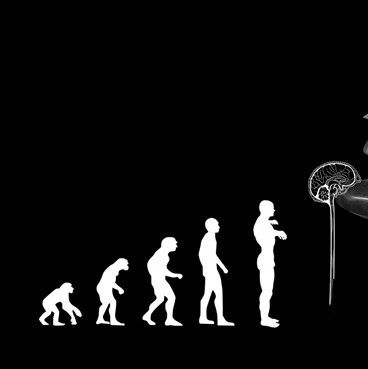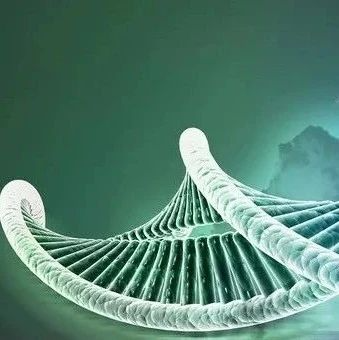最新研究显示,与有时无法抗拒汉堡包诱惑的素食者一样,本是食草动物的大猩猩可能在一定条件下,也禁不住诱惑将魔爪伸向同类。
尽管有些动物园饲养的大猩猩会吃肉,但就科学家所知,野生大猩猩仅以植物、水果以及奇异的昆虫为食。然而,最新一项研究在加蓬卢安果国家公园的非洲野生山地大猩猩的粪便中发现了猴和小羚羊的DNA样本。这一发现提出了一种可能性,即野生大猩猩可能具有秘密的食肉习惯――以腐肉为食。
德国马克斯-普朗克协会进化人类学研究所灵长类行为学家格利特-舒伯特(Grit Schubert)参与实施了这项研究。他认为,这项惊人发现或许具有更为平常的解释――而在黑猩猩可能被列为食肉动物之前,这些解释必须一一被排除掉。例如,大猩猩吃蚂蚁,而蚂蚁又以猴和其他哺乳动物的尸体和骨骼为食。研究人员推测,当大猩猩吃掉蚂蚁的时候,它们可能还吞下存在于蚂蚁消化道中的哺乳动物DNA,然后再排出体外。
另一种可能性则是,哺乳动物DNA来自于活猴或小羚羊,它们在大猩猩粪便中寻找可以食用的种子或其他残留植物颗粒时留下了自己的DNA。舒伯特说,猴或小羚羊“可能舔了舔大猩猩的粪便,或是闻了闻,或是在上面撒尿。大猩猩的粪便中出现哺乳动物DNA的可能性有很多。我并不认为大猩猩会吃肉。”
如果大猩猩真的吃肉,那么它们可能就是第一种食肉类人猿。我们知道,黑猩猩和倭黑猩猩就捕食其他哺乳动物,比如猴。马克斯-普朗克协会的遗传学家迈克尔-霍夫利特(Michael Hofrieter)也参与了这项研究。他说:“大多数食草动物都善于消化肉类。”研究结果于2月25日发表在《公共科学图书馆-综合》杂志的网站上。
推荐原始出处:
PLoS ONE 5(2): e9419. doi:10.1371/journal.pone.0009419
Vertebrate DNA in Fecal Samples from Bonobos and Gorillas: Evidence for Meat Consumption or Artefact?
Michael Hofreiter1,2*, Eva Kreuz1, Jonas Eriksson3,4, Grit Schubert3, Gottfried Hohmann3
1 Research Group Molecular Ecology, Max Planck Institute for Evolutionary Anthropology, Leipzig, Germany, 2 Department of Biology, University of York, York, United Kingdom, 3 Department of Primatology, Max Planck Institute for Evolutionary Anthropology, Leipzig, Germany, 4 Animal Ecology, Evolutionary Biology Centre (EBC), Uppsala University, Uppsala, Sweden
Background
Deciphering the behavioral repertoire of great apes is a challenge for several reasons. First, due to their elusive behavior in dense forest environments, great ape populations are often difficult to observe. Second, members of the genus Pan are known to display a great variety in their behavioral repertoire; thus, observations from one population are not necessarily representative for other populations. For example, bonobos (Pan paniscus) are generally believed to consume almost no vertebrate prey. However, recent observations show that at least some bonobo populations may consume vertebrate prey more commonly than previously believed. We investigated the extent of their meat consumption using PCR amplification of vertebrate mitochondrial DNA (mtDNA) segments from DNA extracted from bonobo feces. As a control we also attempted PCR amplifications from gorilla feces, a species assumed to be strictly herbivorous.
Principal Findings
We found evidence for consumption of a variety of mammalian species in about 16% of the samples investigated. Moreover, 40% of the positive DNA amplifications originated from arboreal monkeys. However, we also found duiker and monkey mtDNA in the gorilla feces, albeit in somewhat lower percentages. Notably, the DNA sequences isolated from the two ape species fit best to the species living in the respective regions. This result suggests that the sequences are of regional origin and do not represent laboratory contaminants.
Conclusions
Our results allow at least three possible and mutually not exclusive conclusions. First, all results may represent contamination of the feces by vertebrate DNA from the local environment. Thus, studies investigating a species' diet from feces DNA may be unreliable due to the low copy number of DNA originating from diet items. Second, there is some inherent difference between the bonobo and gorilla feces, with only the later ones being contaminated. Third, similar to bonobos, for which the consumption of monkeys has only recently been documented, the gorilla population investigated (for which very little observational data are as yet available) may occasionally consume small vertebrates. Although the last explanation is speculative, it should not be discarded a-priori given that observational studies continue to unravel new behaviors in great ape species.







